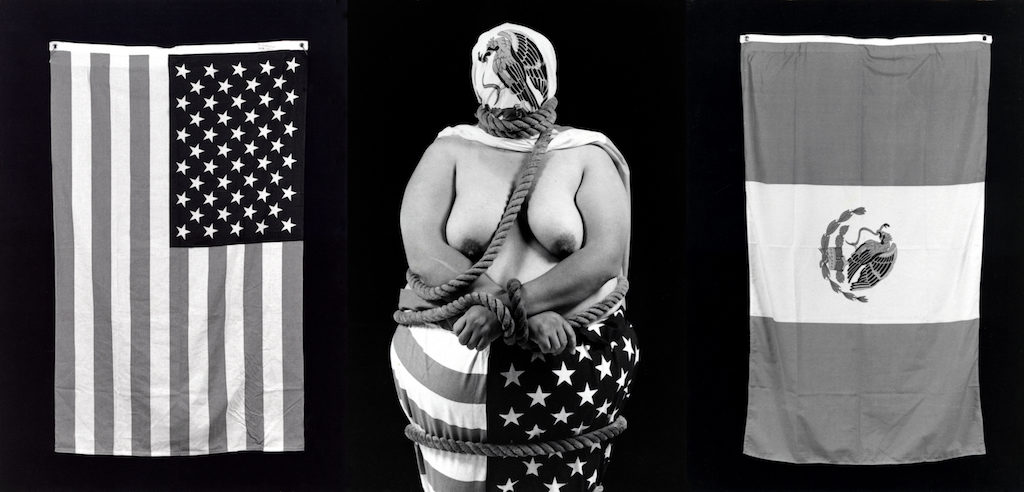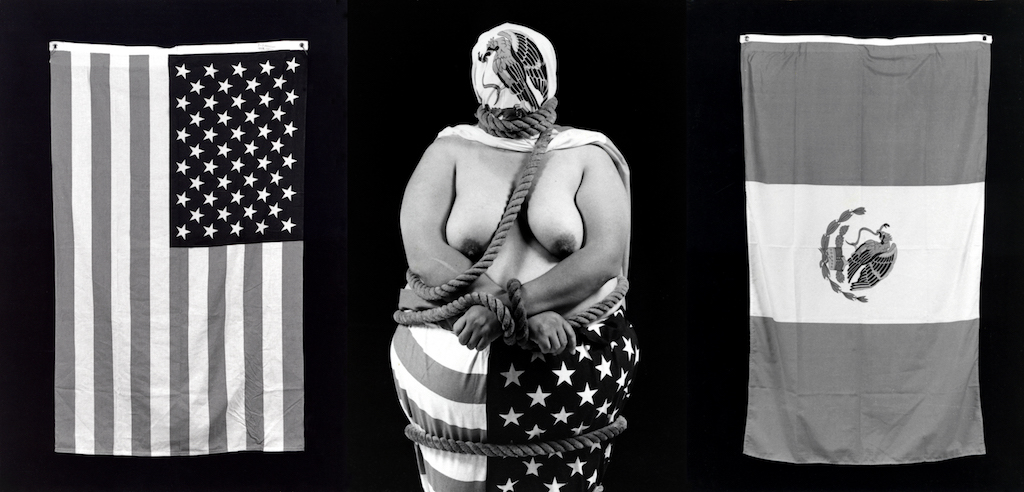[ad_1]

Laura Aguilar, Three Eagles Flying, 1990, three inkjet prints.
©LAURA AGUILAR TRUST OF 2016/THE J. PAUL GETTY MUSEUM, LOS ANGELES, PURCHASED WITH FUNDS PROVIDED BY THE PHOTOGRAPHS COUNCIL
After Laura Aguilar’s career retrospective had a star turn in the Getty Foundation’s Pacific Standard Time: LA/LA in 2017, the J. Paul Getty Museum in Los Angeles has now acquired 35 prints by the pioneering Chicana photographer, who died last year at age 59.
Throughout her three decades of working, Aguilar turned her lens on the numerous landscapes and communities—female, queer, Latinx, working-class, fat, those with learning disabilities—that she was a part of in L.A.’s San Gabriel Valley, where she was born, documenting the people of these often marginalized and overlooked groups.
For the acquisition, the Getty bought works from five different series. Among them are examples from her 1992 “Plush Pony” series, which consists of portraits of the patrons of a working-class lesbian bar of the same name; “Latina Lesbians” (1986–90), which combines portraits of empowered queer Latinas who describe, in their own handwritten words, their experiences as Latina Lesbians; “Clothed/Unclothed,” diptychs of sitters in clothing and nude; and “Nature Self-Portraits” and “Motion,” two portfolios that present Aguilar by herself and with others, respectively, in nature in ways that meld the bodies with their surroundings.
[Read the ARTnews obituary for Laura Aguilar.]
Also part of the purchase is a five-image work titled Access + Opportunity = Success that shows Aguilar holding cardboard signs that define the three words in the title, as well as her best-known work, Three Eagles Flying (1990), a triptych that shows Aguilar topless wearing an American flag as a skirt as thick rope tied around her hands courses upward to her face which is completely covered by a Mexican flag, with either flag in the adjacent panels.
“It’s very important that the Getty acquired Laura’s work because her work is so important to Los Angeles and Southern California and to the lexicon of photography,” Christopher Anthony Velasco, her longtime studio manager and a trustee of her will, told ARTnews. “Her work is highly important just in the realm of photography itself because when you look at the history of photography there aren’t a lot of women of color who are also lesbians and of her body type who use that in their work.”
Though Aguilar is now getting her due, for years her work was overlooked. Her 2017 retrospective at the Vincent Price Art Museum in Monterey Park, California, which subsequently traveled around the country and will open next year at the Leslie-Lohman Museum in New York, brought renewed attention to her work. That show brought into focus the ways in which her work explores the lives of queer women of color and the ways in which their struggles and beauty co-exist all at once.
“Laura put herself out there and talked about the things that most people are afraid to talk about: for example, dealing with depression, having a larger body, dealing with dialysis and sickness,” Velasco said. “We talk about this now in the culture that we live in, but back then in ’80s and ’90s, it was rare, especially hearing it from a woman.”
[ad_2]
Source link

